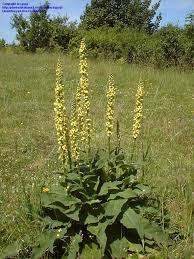 Rosebay Willowherb Rosebay Willowherb Autumn is here! A great time to get out in nature and harvest materials for friction fire! A key part of friction fire, is identifying and collecting suitable materials. Some people pride themselves on gathering the materials on the spot in the wild and others prefer to collect their's in advance (or a bit of both.) It does help to learn about what works and identification of species (handy pocket guides are useful.) It's also useful to understand burning qualities of wood - what burns quickly, slowly, smokes etc (see knowing-your-firewood.html.) I've also found that I'm always on the lookout for materials, and sometimes I find them in unexpected places such as car parks. So even if you live in a city, you'll be surprised at what you can find in often unusual places. I am lucky to live near to amazing open green spaces that have diverse habitats including woodland, meadows, rivers, and ponds, which provide me with everything I need. Unfortunately this year, 2018, Bristol Council have started being more brutal in cutting vegetation back so I'm having to hunt out certain materials including Rosebay! Where possible I prefer to use materials native and local to where I am. Please do forage with responsibility and put nature before your needs! It is best to collect dead standing\fallen wood as this is best for friction fire rather than cut green wood. If you need to cut green wood (e.g. Elder spindles) try to only cut a couple from one tree, use a diagonal clean cut (do not snap) and don't cut flush to the branch it is sprouting from. For plants (e.g. teasel and mullein) you'll need to wait until Autumn once they have seeded before you can cut (they won't season like wood anyway) and if they still have seeds then shake them to scatter the seeds and cut the seed heads off in situ. It's always wise to use discretion (especially in public places) and don't take too much at a time. Here are some materials which work really well for me: Bow Drill Spindles
It is best to select the straightest possible rather then trying to straighten out. If they are still a little wonky then straighten and tie to a broom handle, using elastic bands etc, while still green and drying.
Tinder - most tinder materials are best collected dead and dry it out.
Store everything away dry and in a dry place.
And keep those eyes peeled, it's amazing where you can find materials! Caution-Ticks! Also be aware of ticks (which can pass on Lymes disease.) If you are in places frequented by Deer (especially if in long grass \ bracken) then check yourselves thoroughly (and best to wear long socks, long sleeves, trousers etc) and use Tick removal tools to remove any as soon as possible. Happy responsible foraging! Comments are closed.
|
Archives
January 2024
Categories
All
|




 RSS Feed
RSS Feed